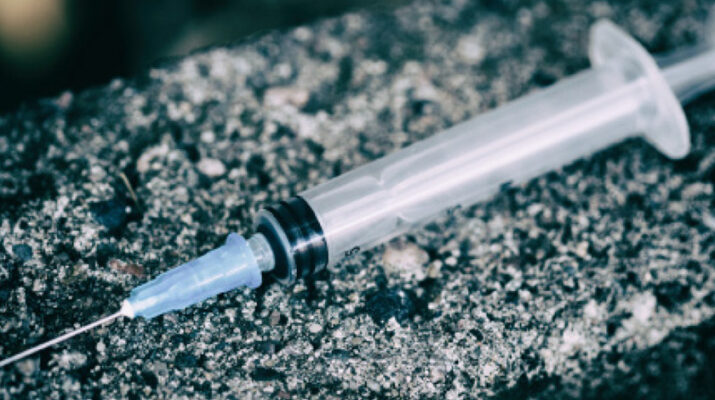On the journey to wellness, harm reduction keeps people safer
By Deborah Jeanne Sergeant
“Harm reduction” as part of a strategy for treating people with substance use disorders sometimes receives a bum rap as contributing to illicit drug use instead of helping people.
Handing out needles to people injecting drugs seems on the surface as promoting drug use. However, in recent years, harm reduction has become a more widespread tool among agencies treating substance use as dangerous additives like fentanyl and xylazine and more have been found in greater amounts in the illicit drug supply.
The New York Office of Addiction Services and Supports notes on its website that harm reduction through drug test kits is an imperative as these harmful additives have been linked with the rise of overdose deaths from drugs like cocaine, heroin, MDMA/ecstasy and with pills. Since users cannot see, smell or taste fentanyl and xylazine in drugs, they often take tainted drugs unwittingly. According to Healthline, fentanyl stays in your system for different lengths of time depending on various factors such as the dosage and the individual’s metabolism.
Distributing free test kits helps reduce these tragic outcomes. Partnering with the MATTERS Network, OASAS has distributed more than 100,000 orders for free drug test kits.
Other harm reduction strategies OASAS promotes include increased naloxone access and training; syringe services programs; overdose prevention education; recovery support efforts and prevention coalitions. The organization further encourages risk reduction strategies such as avoiding using alone (the Never Use Alone Hotline, 800-484-3731 offers live operators to stand by), creating an overdose plan, carrying naloxone to block the effect of opioids and reverse an overdose texting the Help & Hope Program, “JOIN” to 55753 to receive supportive messages and connect with a specialist.
Ready2RecoverCNY in Manlius supports harm reduction as a strategy and hosts Narcan training.
“We’re a big proponent of people knowing how to use it, how to get it and why it’s important,” said Ed Gabriel, co-executive director of the organization. “There’s no simple answer or magic bullet to fully address the opioid epidemic, the fentanyl problem and all the other issues connected with addiction. We feel everyone has to be open to any and all good ideas to help prevent if possible but certainly assist and treat people with substance use disorder and get them on the path to recovery.”
Ready2RecoverCNY was formerly known as Road2RecoveryCNY. The organization also hosts Sober Syracuse, a website of resources to help people in recovery, including alcohol-free activities.
Municipal organizations also tend to support harm reduction.
“We are really supportive of harm reduction initiatives,” said Mariah Senecal-Reilly, who works for the Onondaga County Health Department as program coordinator II and oversees substance use initiatives. “We believe that keeping people alive is the most important thing because if they overdose or have another drug-related complication, they won’t have the opportunity to pursue meaningful change in their lives. We support them in ways to keep them alive while they seek to make change.”
The organization offers Naloxone and Narcan training, including online training. The Health Department also provides materials through the mail or by dropping them off upon request. Pick-up Naloxone boxes are also available throughout the city, with sites listed on the Department’s website.
“People can access it there in a low threshold manner in case they have barriers in acquiring from a pharmacy,” Senecal-Reilly said. “We also give out and encourage people to use fentanyl and xylazine testing strips. We’ve given out thousands. They help people stay safe. It’s common that people don’t know what is in substances they’re using. We’re seeing counterfeit pills. People think they’re getting Adderall but it doesn’t contain that. It could contain fentanyl.”
She said that additives commonly cause overdoses among people who use drugs because they are not prepared for an overdose incident.
In addition to drug safety testing and clean needle distribution and collection, the Health Department encourages people who use drugs to never do so alone. All of these measures can help people stay safer and are part of the mobile harm reduction unit.
The health department’s distribution of personal care supplies and clothing helps encourage people who use substances to take better care of themselves and consider pursuing recovery.
“We have a peer recovery advocates team that is available to be with someone who is going through recovery or trying to make positive changes in their life,” Senecal-Reilly said. “They also come out with the harm reduction unit. We link people to them regularly. The peer team is helpful in that because of their lived experience, they can knowledgably advise people as to how to access resources.
“We want people to be safer. We’re there to support them at whatever change they’re able to make. We’re really happy when people come to their own realization that they can have some autonomy and control over their life and implement strategies to improve their situation. It’s about empowerment and helping people to get into those stages of change. When people are armed with harm reduction strategies, they are more likely to engage in treatment than those who are not. It breaks things down into smaller chunk.”
Some detractors believe that harm reduction enables people to use illicit drugs. However, the health department’s measures are not intended for people who don’t use illicit drugs.
“There are so many systemic barriers that prevent people from seeking care,” Senecal-Reilly said. “Trauma is the initiator of a lot people’s use. That kind of recovery is a long-term process. We want people to get to a stable place and realize the underlying causes of their use. This is a tool while they pursue this kind of path.”

